
The cost of a barbed wire fence depends mainly on how large your property is. If you have a longer fence, you can expect to pay a few thousand dollars.
The key to a long-lasting fence is choosing the best wood


The first step when installing a new wood fence is picking the right materials. It’s crucial that you select the best wood for fence posts and pickets before embarking on your project. While most homeowners go with the same wood for the posts and rails, others mix and match. Regardless of your overall vision, these are the best wood fence post options, depending on your budget.
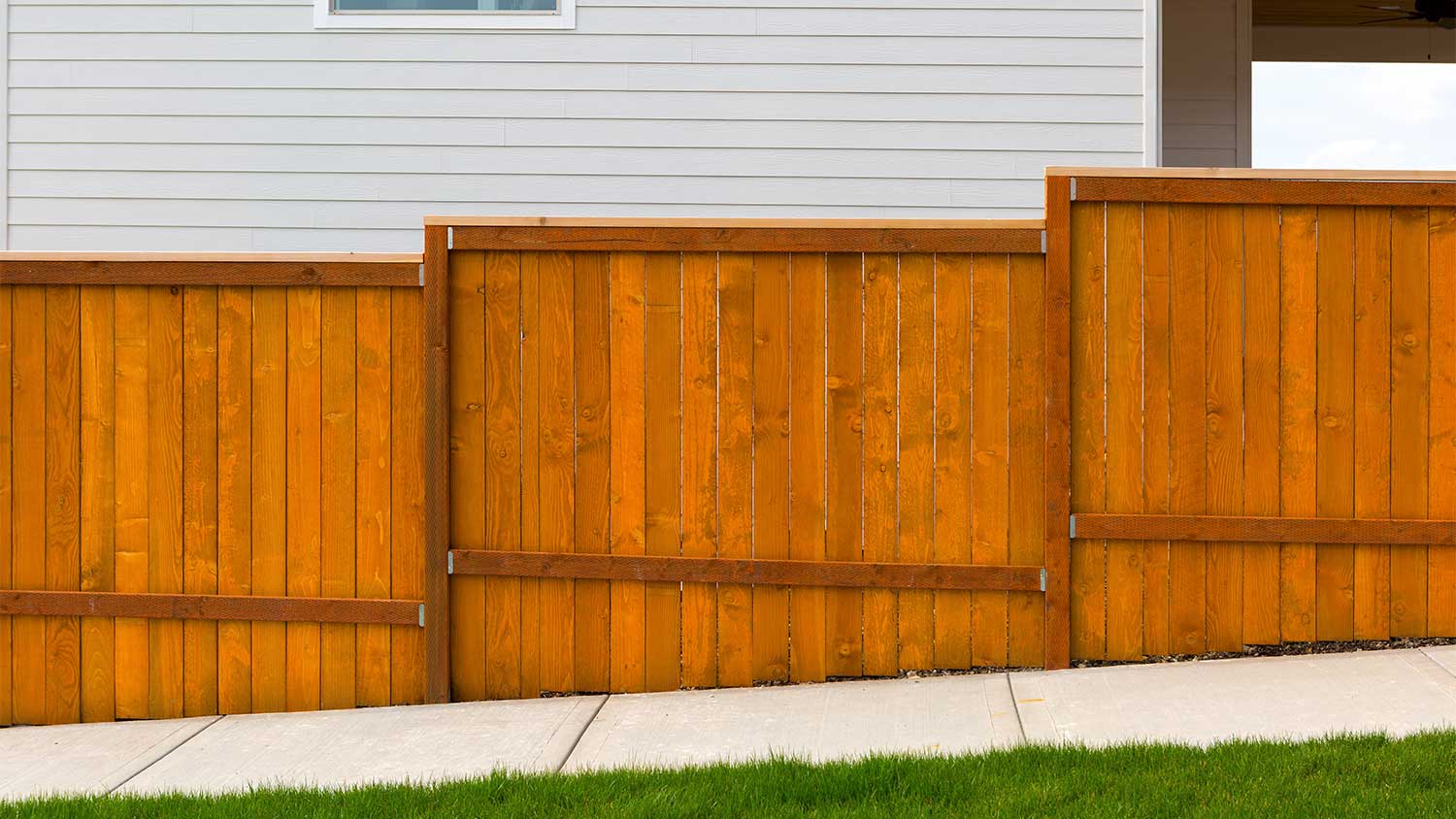
Cedarwood is a popular choice for fence posts because of the wood's unique color and grain texture. In addition to looking great, cedarwood is naturally resistant to rot and repels insects with its natural oils. While many types of wood require chemical treatments to enhance their durability, cedar can go untreated and last up to 30 years.
Though it will create a long-lasting fence that will likely save you money over time, the initial costs of using cedar are usually higher than pressure-treated pine, at $2 to $3 per foot. Another consideration is that cedar can fade over time, and it requires periodic staining or resealing. It also warps when exposed to repeated or constant humidity.
| Pros | Cons |
|---|---|
| Unique appearance | Higher cost |
| Resists rot and insects | Fades over time |
| Long-lasting | Prone to warping |
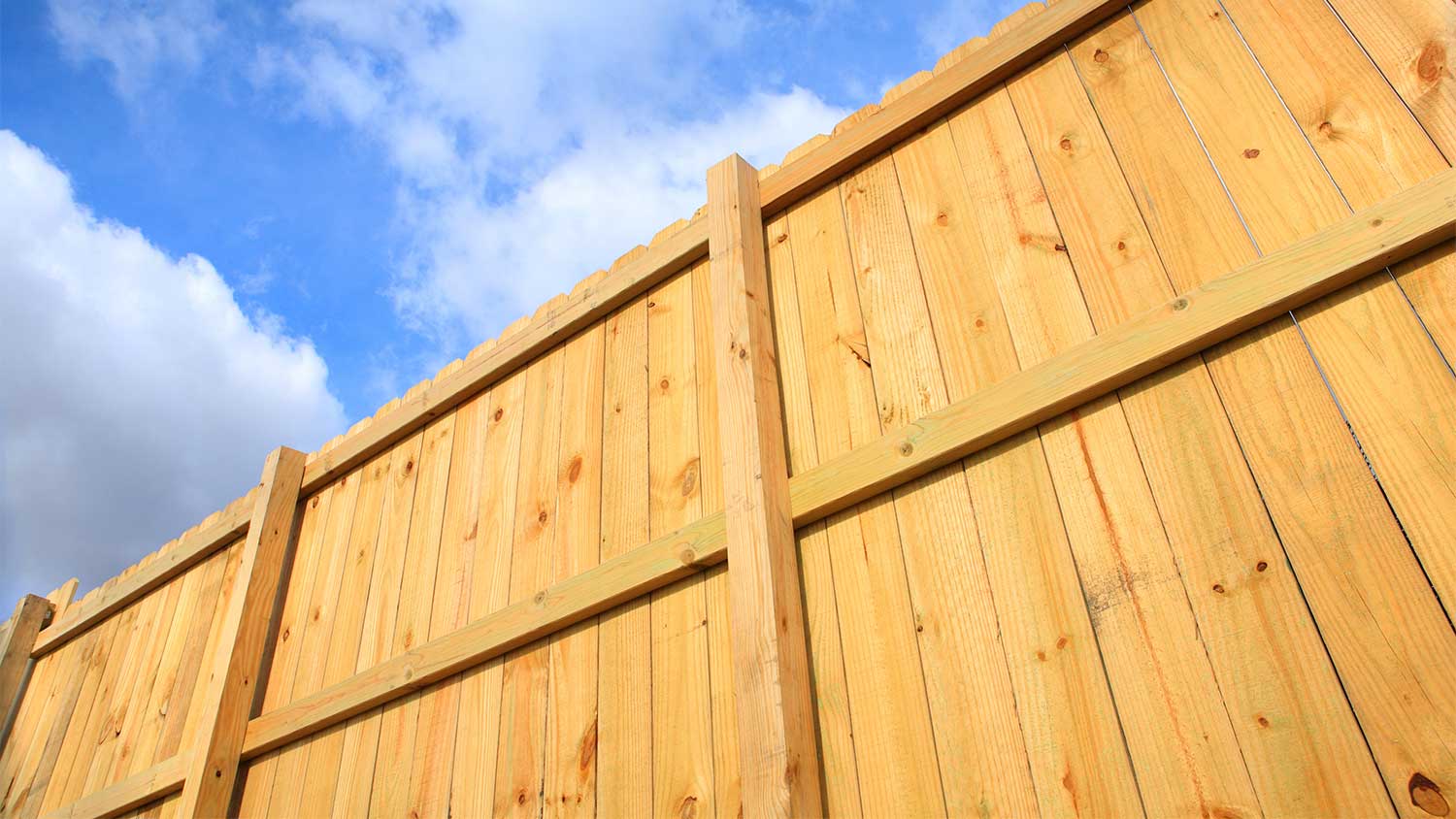
When you see pressure-treated wood, it is usually southern yellow pine. Pinewood comes in yellow or white shades and stains well, making it easy to modify to your liking. It is one of the most affordable types of wood fencing, at $1 to $5 per foot.
Pressure or chemical-treated wood can withstand weathering, but untreated pine will require treatment. Although sealant will help preserve this wood, pine will last longer in drier areas. Pine fencing is easily damaged as it is softwood. So you may need to perform periodic maintenance to restore or replace damaged or scratched fence posts.
| Pros | Cons |
|---|---|
| Stains well | Needs chemical treating |
| Easy to customize | Warps in moisture |
| Affordable | Prone to damage |
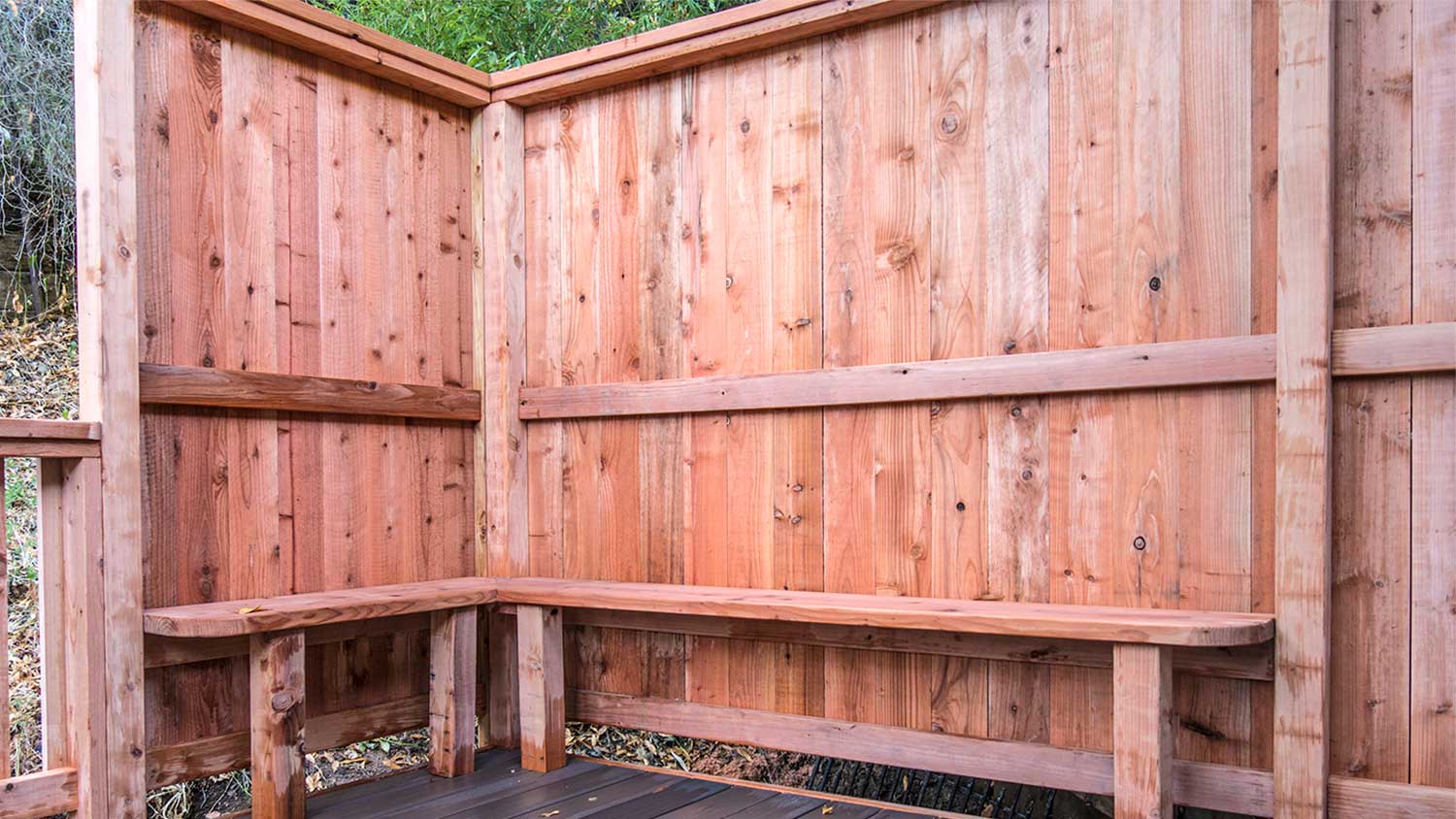
Redwood is a dense and nonporous wood species that makes a beautiful fence. Due to its dense fibers, redwood naturally repels pests and is far less prone to warping than other softer woods. It has natural weatherproofing properties that make this wood perfect for a long-lasting fence, and it will even withstand heavy rainfall.
Because this wood is durable, attractive, and resistant to the elements, it does come at a higher price point, at about $8 per foot. Though applying sealant isn't required, it will still preserve the appearance of your fence, which can incur an additional cost. Additionally, redwood isn’t as widely available as other woods, especially outside of the West Coast. However, it is best for fences that are resilient without much maintenance.
| Pros | Cons |
|---|---|
| Repels pests | Higher cost |
| Won’t easily warp | Sealing recommended |
| Weatherproof | Limited availability |
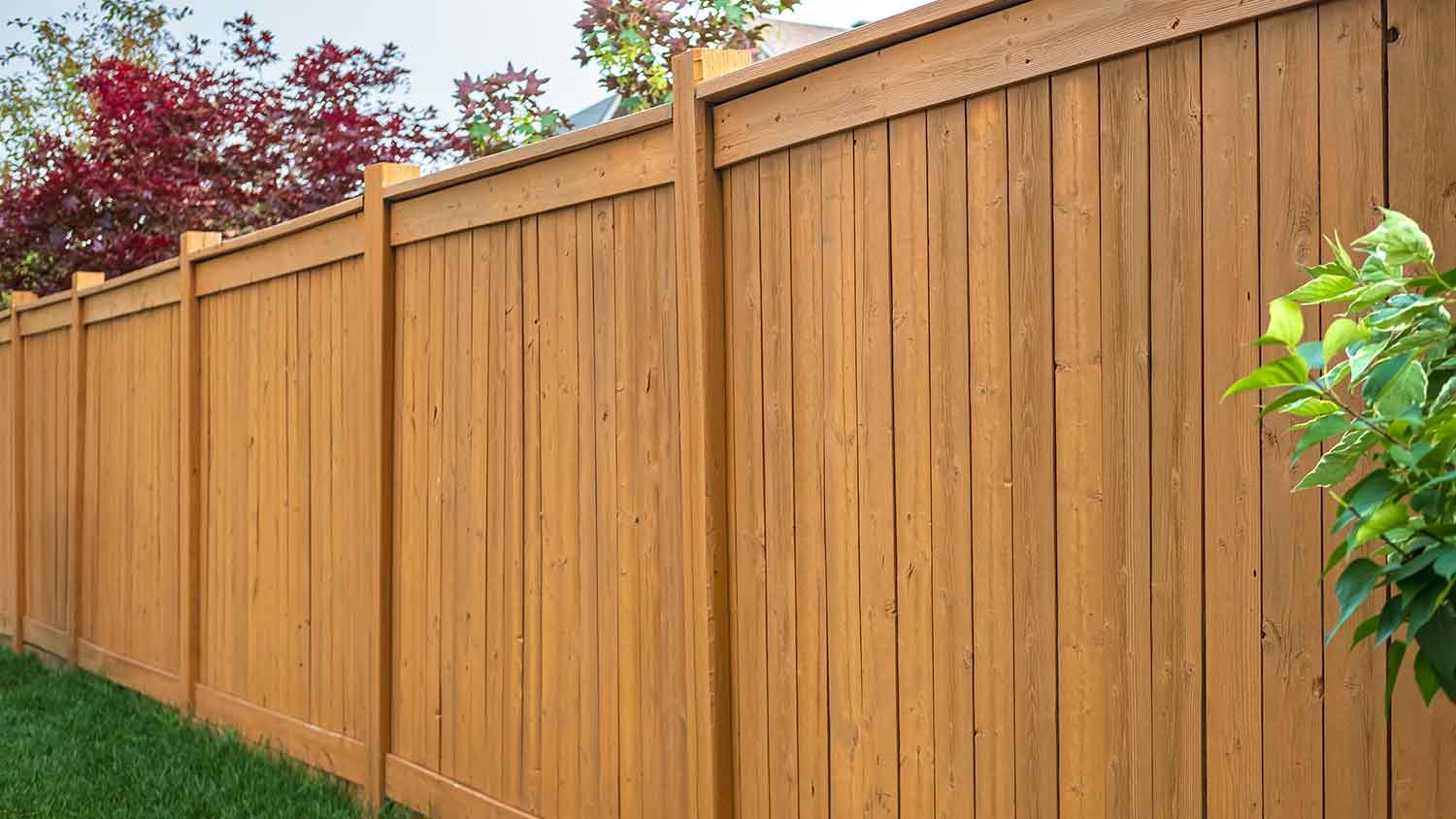
Oak is one of the most popular choices for wood fences because of its variety of colors and reputation for strength and durability. Oak is known for its aesthetic appeal due to its straight grain pattern and light brown color, which benefits greatly from a good coat of natural oil.
It's also one of the strongest woods, making it ideal for outdoor fencing because it can withstand the elements for decades with regular maintenance. With the right care, your oak fence will remain standing for 20 years or more. Its strong nature, however, also means that it’s a heavy wood, making installation a bit more challenging than other wood options. Oak is also best for a dry climate because it doesn't repel insects well—which doesn't bode well for rainy regions.
| Pros | Cons |
|---|---|
| Variety of colors | Regular staining and sealing required |
| Strong and durable | Challenging installation |
| Aesthetic grain pattern | Doesn’t repel insects |

Black locust is a resilient wood species that will create a long-lasting fence. It is a stiff hardwood that is resistant to bugs, rot, and mold. In fact, black locust wood can withstand humidity and intense rainfall without taking damage. If you live in a high-moisture area, this may be the best wood for your fence.
Another dense, heavy wood, black locust is more challenging to work with and install. This wood may also be more expensive than other woods, depending on where you live. Native to the Appalachian region, black locust wood is more common on the east coast of the United States. However, if you have access to the wood, it is a smart choice for fencing as it requires little to no treatment. This material costs between $5 to $10 per foot.
| Pros | Cons |
|---|---|
| Resists rot and mold | Challenging installation |
| Repels insects | Higher cost |
| Withstands moisture |
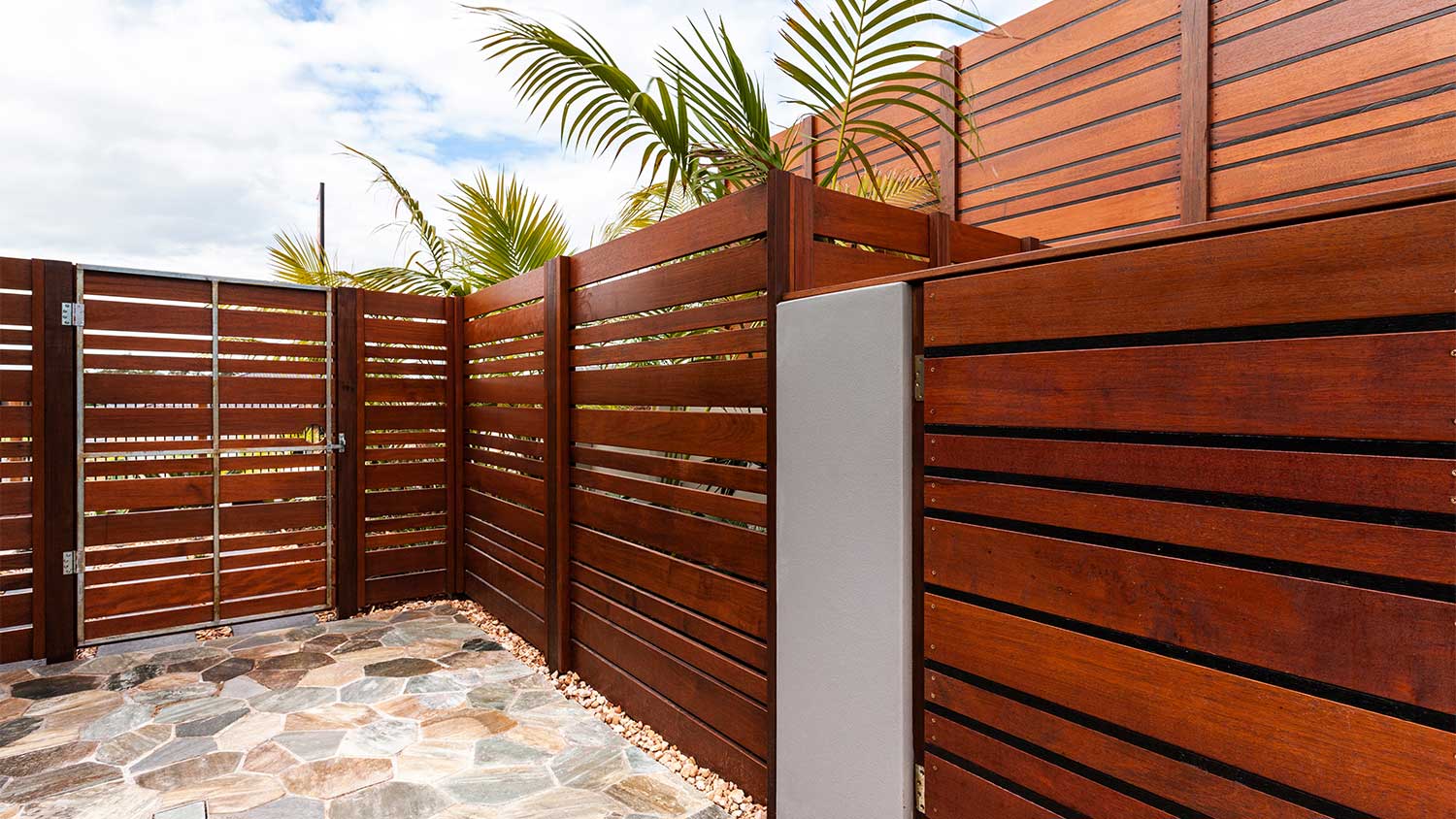
Ipe is a lovely, red-tinted tropical hardwood species that is longer-lasting and more durable than a softwood like pine. Naturally resistant to rot, pest infestation, and even fire, Ipe wood requires no chemical treatment for preservation. Ipe presents a strong and attractive option for environmentally-conscious homeowners who would rather avoid using chemicals.
Since it’s a tropical wood, there are some challenges when Ipe is installed in dry climates— there’s a chance that it could splinter or crack. Installation is, again, a bit more difficult than softwoods due to its density. Wearing gloves and a mask is essential when working with Ipe. When cut, the wood releases dust that can cause an allergic reaction when touched or inhaled. Ipe costs $3 to $5 per foot.
| Pros | Cons |
|---|---|
| Durable and lasting | Cracks in dry climates |
| Resists rot, pests, and fire | Challenging installation |
| Unique red tint | Irritating dust released |
Ipe trees are endangered, which means trade of this wood is more strictly regulated and prices are increasing.

Though cypress is a softwood, it is resistant to insects and rot. A popular choice for its attractive grain appearance, cypress is widely available at $2 per foot. Like other softwood fencing, cypress fences can last up to 25 years with proper care. If you desire an attractive wood with a unique natural pattern, cypress could be the best wood for your fence.
Compared to other softwood, cypress is stiff and dense. While unique and appealing, the grain pattern can be challenging to cut. Working with this wood requires patience to not split or crack during fence assembly.
| Pros | Cons |
|---|---|
| Unique appearance | Stiff construction |
| Resists rot and insects | Challenging to cut |
When selecting the proper wood for your fence posts and pickets, first consider your climate. Some types of wood, like redwood, can withstand heavy rainfall, while pine would last longer in a dry area. A wood that is less resistant to water will be prone to rot, mold, and mildew, so keep this in mind if you live in a rainy climate. Choosing a dense, rot-resistant wood will save you money in maintenance should you live in an area with high moisture.
Bugs and wildlife will also eat away at your wood fence’s longevity—literally. If your home is located in a fairly rural community with lots of critters and creepy crawlers running around, it’s best to opt for a more durable wood like redwood, black locust, or Ipe wood.
But even the most durable wood fences need maintenance to help them live long and strong, so another factor to consider is how easy it is to clean or stain a specific wood type. Redwood is another winner here when it comes to low maintenance. If you don’t want to worry too much about frequent staining, cedar is a great option, as its rich color can last quite a long time without any touchups.
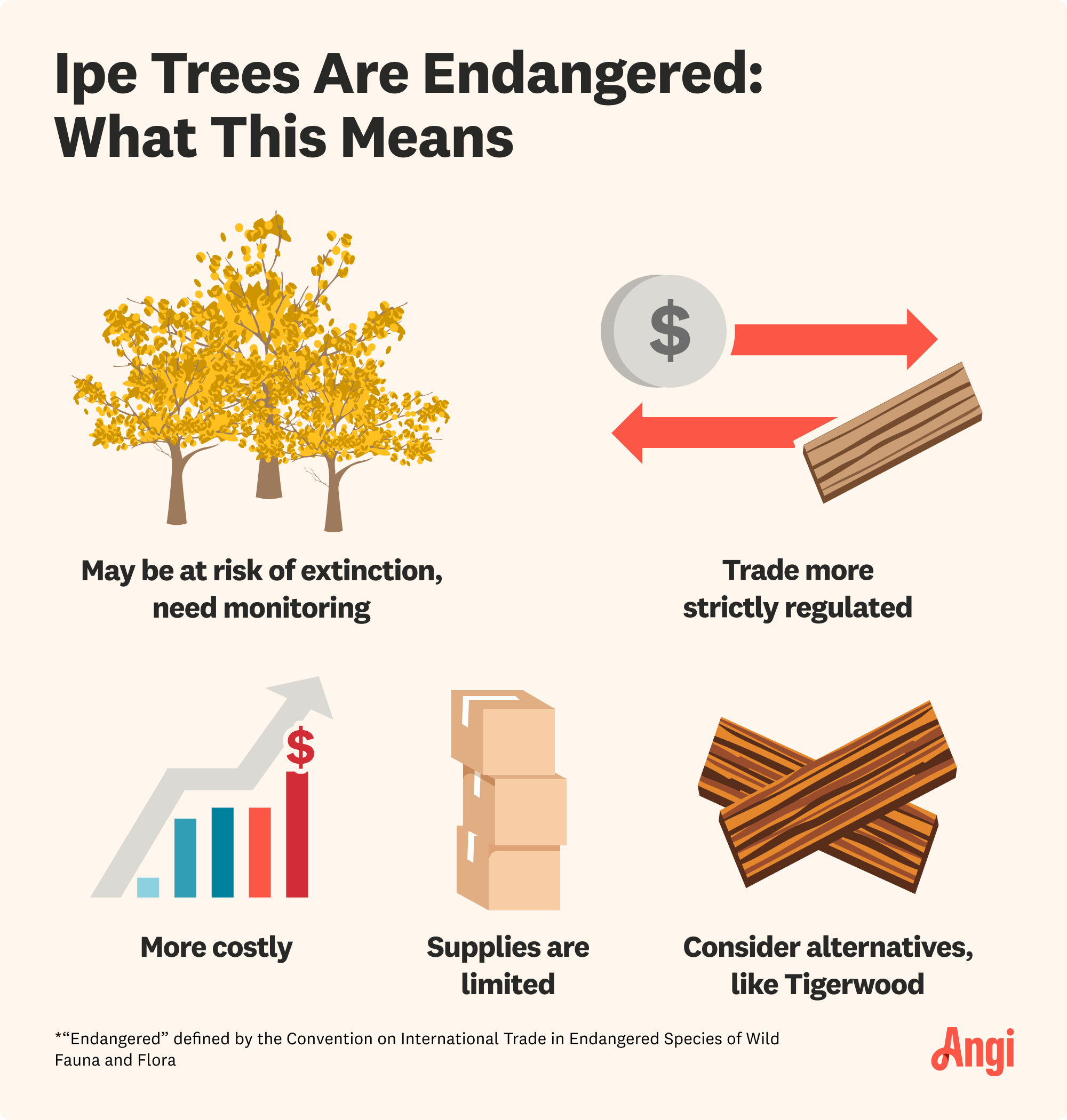
The cost to install a wood fence is about $3,170, though it can range from $1,800 to $4,555, depending on the type of wood, size, style, and other factors. The fence’s material plays a big role in your final price tag, as does local labor costs. It’s best to collect about three estimates from a wood fence installer near you before embarking on a build.
Though redwood, Ipe, and black locust wood are resilient and durable, they cost more than pine and fir. The difference between these species often comes down to their natural resistances. A costlier wood likely will not need as much maintenance or treatment as its more affordable counterparts.
From average costs to expert advice, get all the answers you need to get your job done.

The cost of a barbed wire fence depends mainly on how large your property is. If you have a longer fence, you can expect to pay a few thousand dollars.

Silt fence installation costs vary depending on the size of the lot, the fencing type, and the installation technique. Use this guide to get the budget right.

The cost to install a picket fence varies by height, material, labor, and more. Read this guide to help you budget for a picket fence installation.

When it comes to the fence for your home, privacy can be paramount. That’s why privacy fences are such a great choice for many. Find out if they’re right for you.

Choosing a vinyl, PVC, or plastic fence offers benefits over wooden fencing, like improved durability. Learn about the many types of vinyl fencing available.

Determining whether to repair or replace fence installations can be a difficult choice. Learn more about what factors can help you decide which way to go.